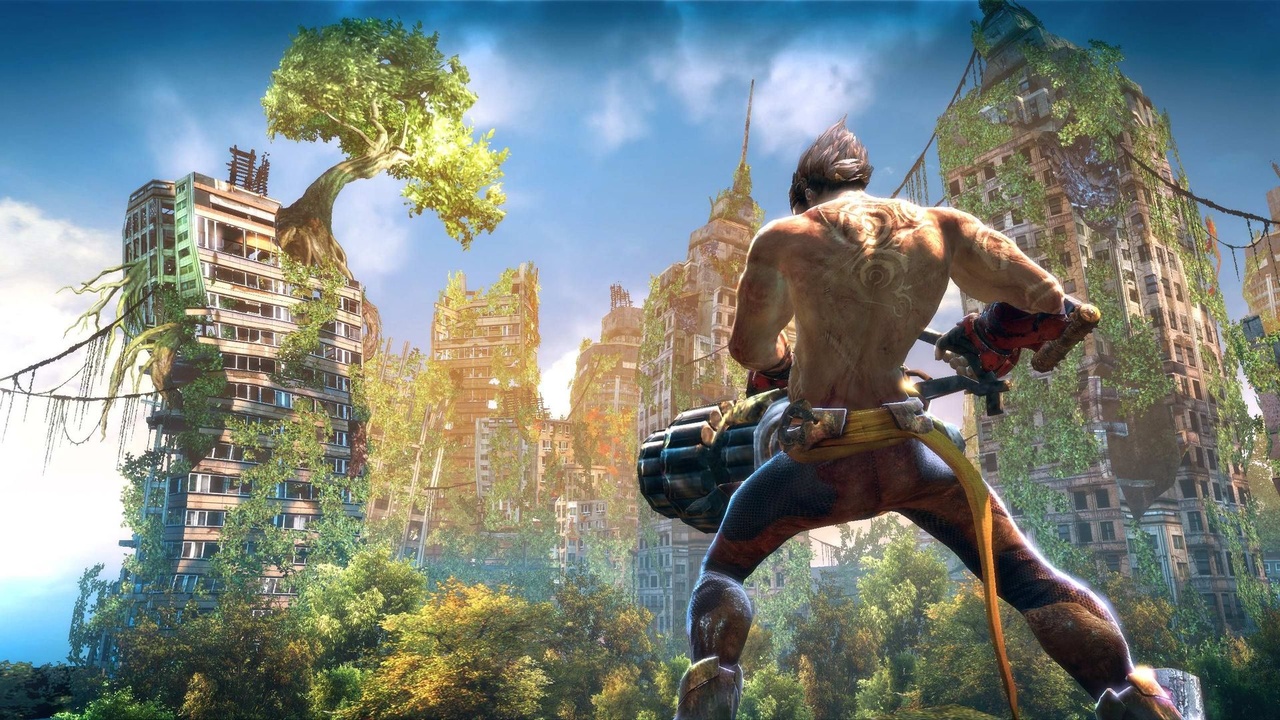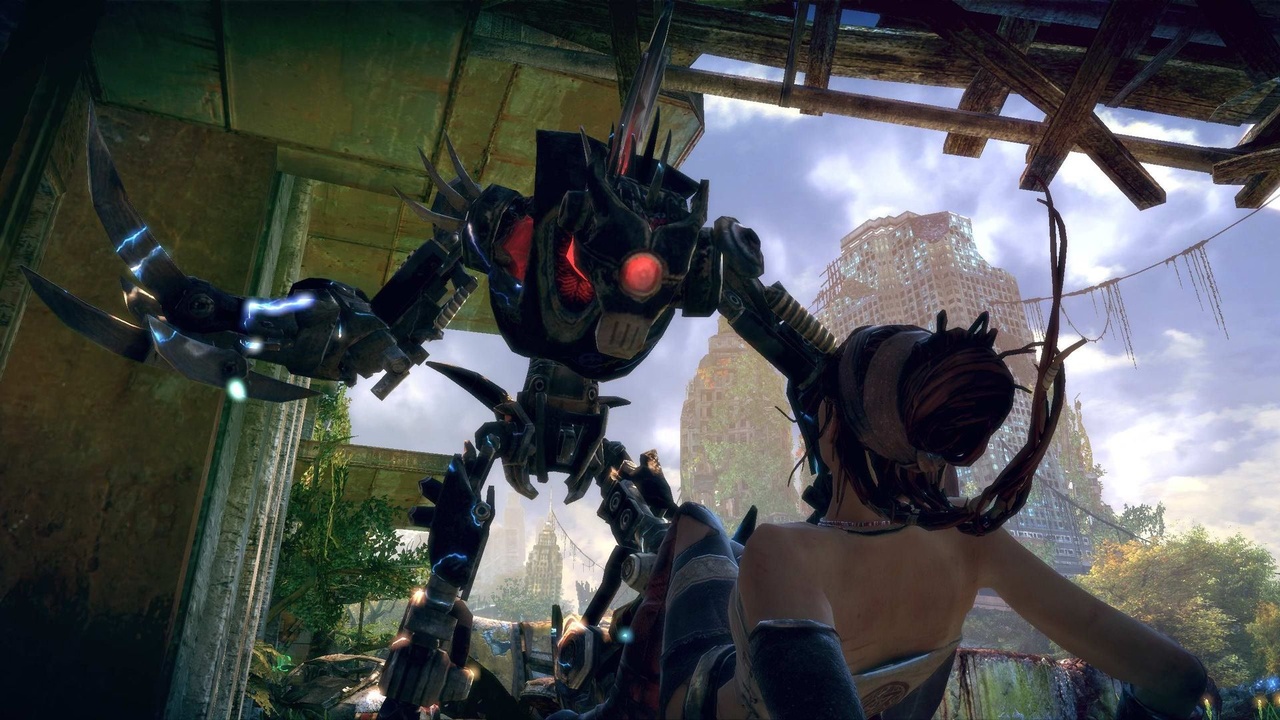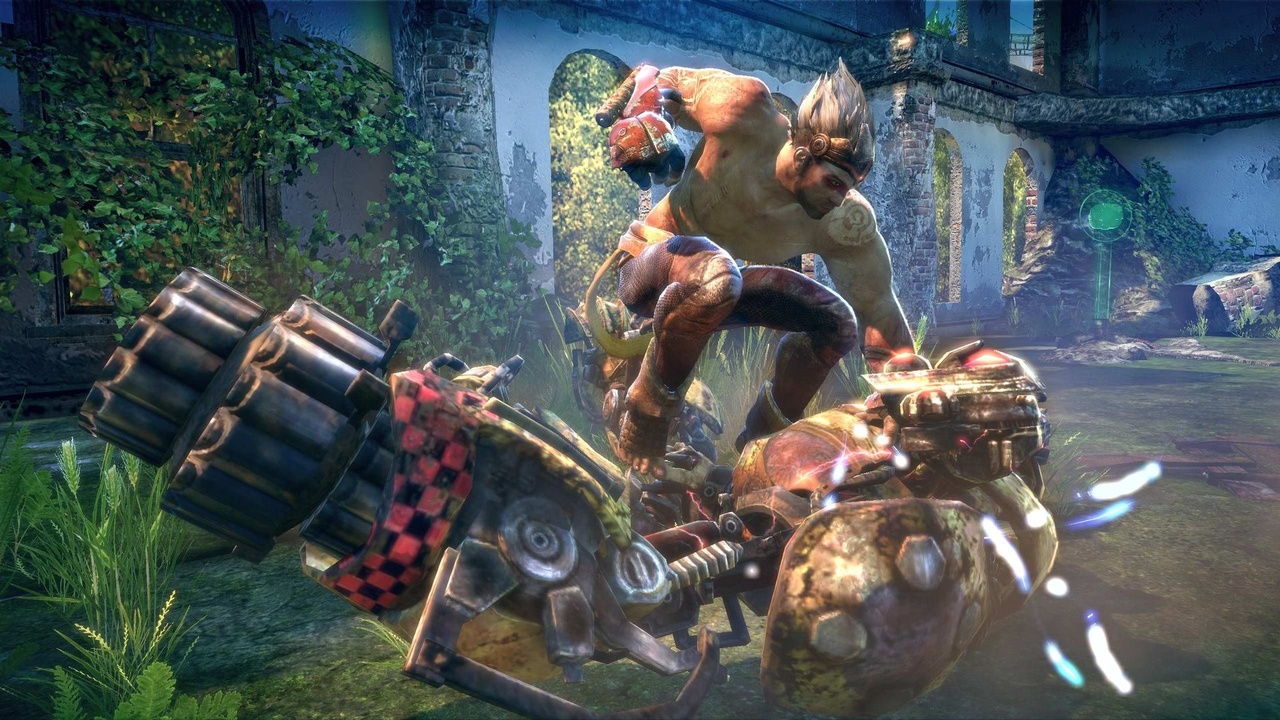Enslaved: Odyssey to the West First Impressions
We got a first look at the lead characters, combat, and platforming in Ninja Theory's follow-up to Heavenly Sword.
Most visions of a postapocalyptic future involve a crumbling society, decaying cities, and a colour palette that doesn't stretch beyond grey and brown. With Enslaved: Odyssey to the West, Heavenly Sword developer Ninja Theory has created a third-person adventure whose futuristic world is filled with vivid colours and rich vegetation.
Another Crab's Treasure Is A Soulslike 3D Platformer | GameSpot Review Stellar Blade Review Nintendo 64 – April 2024 Game Updates – Nintendo Switch Online Super Monkey Ball Banana Rumble - Official Multiplayer Features Trailer PUBG | Erangel Classic Returns Gori: Cuddly Carnage | Meow Launch Date Announcement Trailer Sand Land Review Genshin Impact - "Arlecchino: Afterglow of Calamity" | Collected Miscellany Marvel Rivals - Official Loki Character Reveal Trailer | The King of Yggsgard Fortnite Festival - Official Billie Eilish Cinematic Season 3 Trailer Remnant 2 - The Forgotten Kingdom | DLC Launch Trailer Stellar Blade - Official "The Journey: Part 2" Behind The Scenes Trailer | PS5 Games
Please enter your date of birth to view this video
By clicking 'enter', you agree to GameSpot's
Terms of Use and Privacy Policy
Enslaved is loosely based on the 16th-century Chinese novel Journey to the West (known as Monkey in Western countries) but is set 150 years into the future. A widespread conflict has led humanity to the brink of extinction, leaving a mere 50,000 humans left alive on the planet. Robotic drones created to fight in the wars are the only remnants of the conflict and serve as futuristic mines, killing anyone who dares disturb them. With so few people left, the planet has reverted back to an almost Eden-like state, with vibrant plant life taking over the dilapidated cities. The remaining humans are split into two camps: those who live in small communities and those who choose to go it on their own, living in the wild.
The protagonist, Monkey, is one of the latter group and has learnt to survive using just his bare hands. Unfortunately for him, there are still some humans left hoping to capitalise on the misfortune of others. Mysterious slave ships have been capturing humans, fitting them with painful headbands, and transporting them to the West. Monkey is one of those captured, along with a girl called Trip from a windfarm commune. She manages to steal a slave headband, reprogram it, and fit it to Monkey, giving her complete control over his actions. She uses Monkey to escape the slave ship and orders him to take her home.

The game focuses on the uneasy relationship between these two characters. They have incredibly different views about life, with Trip believing in the safety that comes from living with others and Monkey believing in the solitary life. Though Monkey is forced to help Trip, he eventually learns to care for her over the course of the game. Ninja Theory has gone to great lengths to ensure that the story and the relationship between Monkey and Trip are at the heart of the game. 28 Days Later writer Alex Garland has been brought on board to help pen the script, and Lord of the Rings star Andy Serkis has been brought in to voice and motion-capture Monkey.
Our demo began shortly after Monkey and Trip had managed to escape the slave ship as it crashed into New York. You take control of Monkey, while the AI takes control of Trip. She automatically follows you around, but you're also able to pick her up and carry her, as well as tell her to hide while you scout ahead to take on enemies. What immediately struck us was the organic look of the city. Huge green trees sprouted out of the tops of tall skyscrapers, dense foliage carpeted the roads, and the overall vibrancy of the world was beautiful to behold. The duo were trying to make their way to the crash site, passing by piles of rusted crates and a huge ravine that ran through the centre of the city. They soon came across an impassable gap, which required a spot of platforming. Trip wasn't as physically able as Monkey and required help when passing through certain areas. Monkey was able to climb up some crates but had to pull Trip up behind him afterwards. In another section he had to throw Trip across large gaps, which she was unable to cross by jumping. The platforming reminded us of Assassin's Creed, as there was a lot of swinging from poles, clambering up the sides of buildings, and shimmying across ledges.

The next section showed off combat in the game. Because most of the human race is extinct, the majority of enemy encounters are against mechs. We saw several different types: some that resembled humans, complete with robotic arms and legs, and others that were more specialised, taking the form of weapons, such as turrets. The mechs were inactive until disturbed by a human presence, and a circular line around them indicated their area of detection. Because of the circular line, it was entirely possible to skip around enemy encounters or sneak up on enemies and use Trip to weaken them first. She's able to scout areas using a dragonfly-like drone that lives in her hair, project decoys to distract enemies, and read enemy blueprints to identify weaknesses. One example we were shown saw Trip distract a group of mechs with a decoy, which allowed Monkey to sneak around them via a set of platforms and climbable walls. Once behind them, he was able to use knowledge gained from blueprints to rip off their minigun-powered arms and finish them off in a blaze of bullets.
You can also choose the direct approach and face mechs head-on. Monkey carries a staff, which can be used both in melee combat or as a long-range weapon. He has four types of moves: block, standard attack, heavy attack, and clearance attack. Each of these can be chained together, though Ninja Theory was keen to stress that the combat system was simple to pick up and was not combo-heavy. We were impressed with what we saw: Monkey pounded mechs into the ground with an overhead smash and looked incredibly powerful thanks to some fluid character animation. We also saw some God of War-inspired quick-time sequences, where Monkey tore into a demolition-ball-wielding berserker, leaping onto its back and ripping out its circuitry. There are other God of War-style touches, such as the collectible red orbs that can be used to upgrade Monkey's weaponry.

Ninja Theory likened the relationship of Monkey and Trip to that of Nariko and Kai from Heavenly Sword and promised that the game would conjure up the same complex emotions and character development that feature in a good drama. Unfortunately, we were unable to see much of this in our demo, as it still had placeholder animations and slightly amusing computer synthesised voice-overs. Enslaved is due out towards the end of 2010, but Namco Bandai has promised that more on the game will be revealed at the Electronic Entertainment Expo in June.
Got a news tip or want to contact us directly? Email news@gamespot.com
Join the conversation